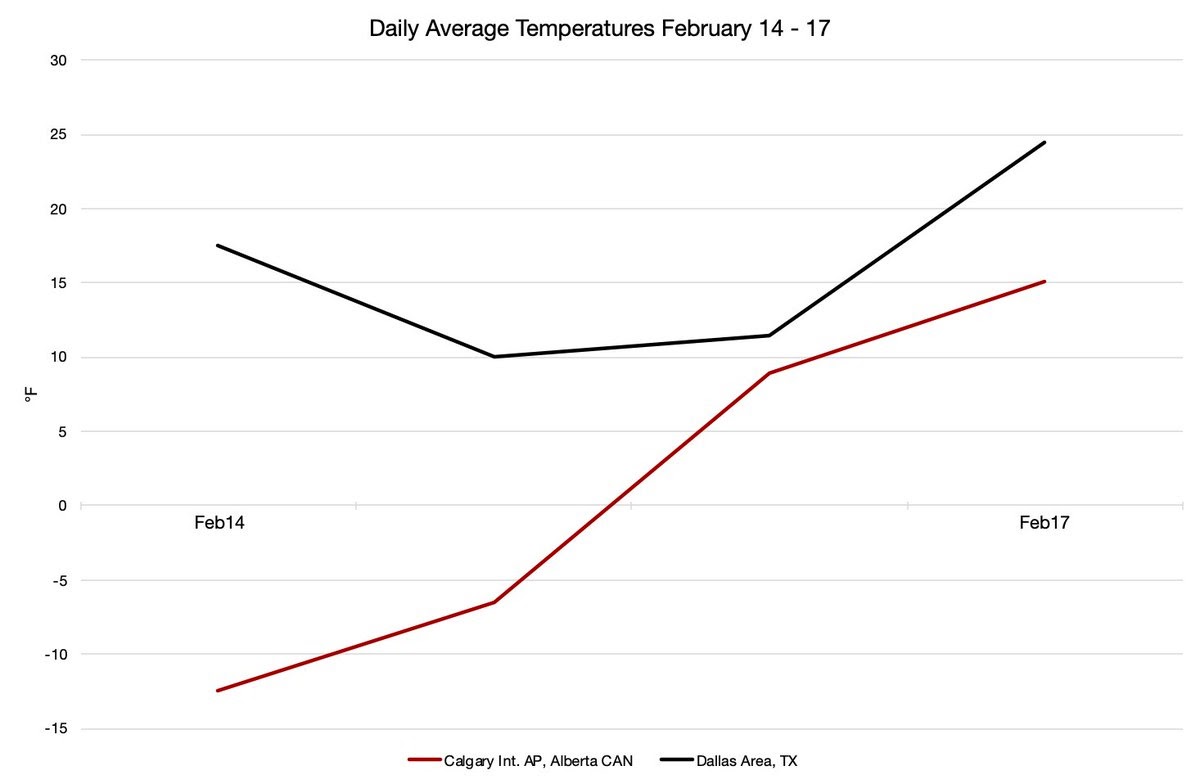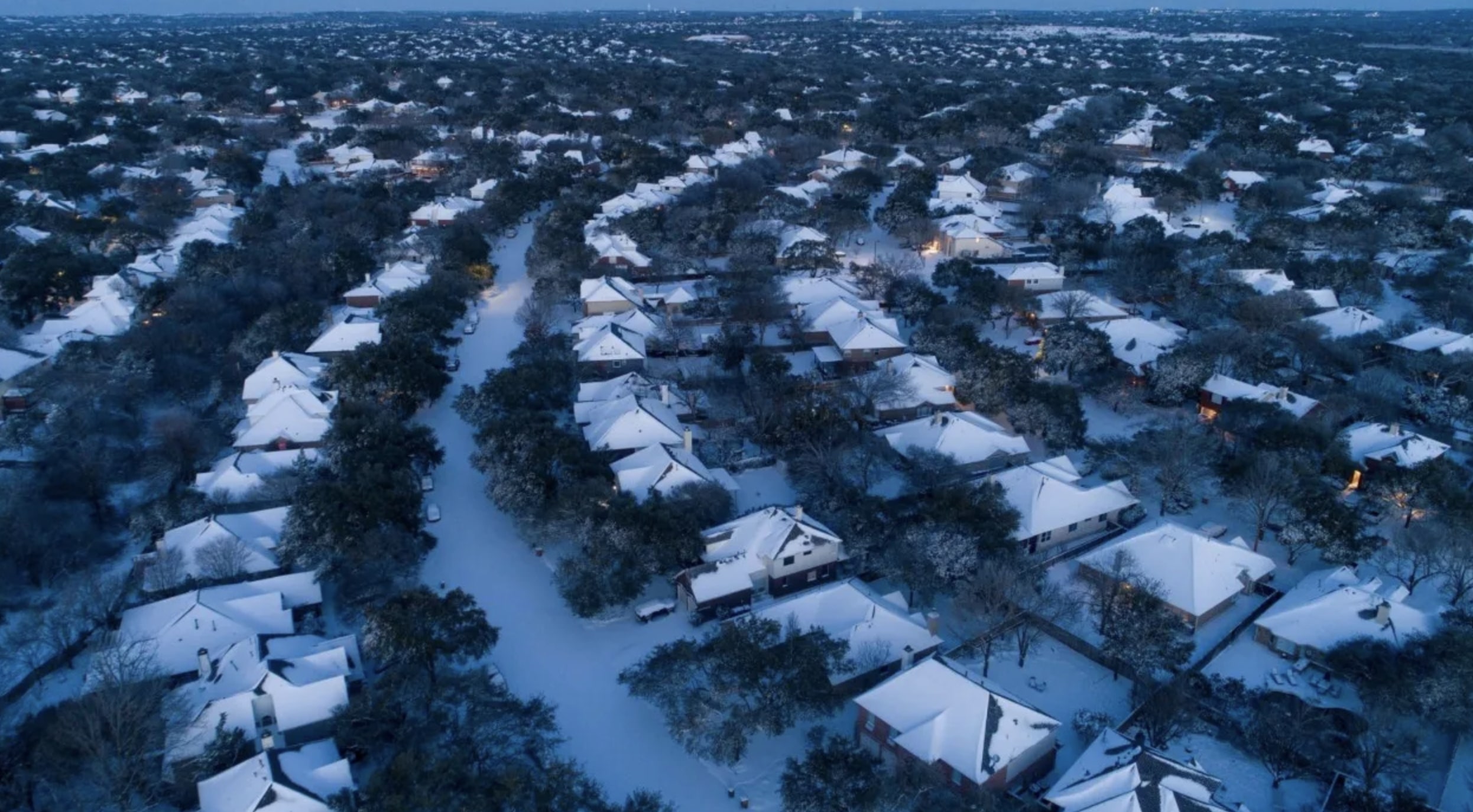Quick Summary
-
For the last decade+ policy in TX and in the US has been focused on mandating or subsidizing as much wind and solar as possible. TX has bragged about being the biggest wind generator in the US.1
-
The TX focus on wind has come above all at the expense of coal, which has the resiliency advantage (along with nuclear) of being able to store large quantities of fuel onsite; gas mostly requires "just in time" delivery from pipelines.
-
“In 2009, coal-fired plants generated nearly 37 percent of the state’s electricity while wind provided about 6 percent. Since then, three Texas coal-fired plants have closed...In the same period, our energy consumption rose by 20 percent.”2
-
Because intermittent wind and solar can always go near zero--as we saw recently in TX--they don't replace the cost of reliable power plants, they add to the cost of reliable power plants. This is why the more wind and solar grids use, the higher their electricity prices.
-
To lessen the price increases from "unreliables" governments try to get away with as few reliable power plants online as they can get away with. TX is no exception. The Public Utilities Commission of TX has called their grid's margin for error ("reserve margin") “very scary.”3
-
Additionally, the expense and distraction of accommodating "unreliables" takes away money and focus from resiliency. In CA this meant not maintaining power lines. In TX it may have meant not focusing enough on making the reliable power plants resilient enough to winter weather.
-
While we don't know yet what exactly caused certain gas and coal plants to go down--lack of resilience for those plants, grid mismanagement, or fuel infrastructure--we know with 100% certainty that gas and coal plants can easily run in far more adverse conditions than TX has now.
-
We know with 100% certainty that gas, coal, and nuclear plants can easily run in far more adverse conditions than TX has now. And we know with 100% certainty that even if no wind turbines had frozen they would have been nearly useless during large portions of recent weather.
-
If you are looking at the facts in TX, the obvious lesson here is: stop subsidizing and mandating unreliables--which are often useless when you need them most--and do a better job at managing reliables.
-
Instead of acknowledging the reality that unreliables can't keep us warm or powered in the winter--and that the "100% renewable" direction is disastrous--advocates of unreliables are instead implying that no source of electricity can be relied upon, so no need to single out wind.
-
Dr. Emily Grubert of GA Tech writes: "Let us be absolutely clear: if there are grid failures today, it shows the existing (largely fossil-based) system cannot handle these conditions either." Really? Ever heard of the Midwest or Canada?4
-
We know how to produce enough low-cost, reliable electricity for every situation. You just build a whole bunch of reliable power plants, including those with on-site fuel storage--such as coal and nuclear. You place a premium on reliability and resilience. That's it.
-
TX is having an electricity crisis during bad winter weather because it did not focus enough on building reliable power plants and infrastructure--because it was obsessed with getting as much unreliable wind/solar electricity as possible. Let's all learn from this mistake.
Right now TX's plans include:
- 0 new nuclear plants
- 0 new coal plants
- 9.4 GW wind (the existing 32 GW went to 1 GW during crucial times this week)
- 11.9 GW solar (solar was useless much of the week)
- 5.0 GW gas (to handle the unreliables)
These plans should change.5
-
As bad as TX's plans to "rely on unreliables" are, they are nothing compared to the Biden Plan, which calls for nearly 100% solar and wind electricity by 2035! Everyone should be asking him how the hell his plan would have fared in TX this week.6
-
TX and America need to totally change direction in energy policy toward one of energy freedom, including freedom for the wonderful but demonized and criminalized ultra-reliable, non-carbon electricity source known as nuclear.7
More Info
A two-sentence summary
The truth about renewables and the Texas winter power shortages in two sentences:
Unreliable renewables were only part of the problem. But they are none of the solution.

The big picture
Take a look at electricity use in New England, New York, the Mid-Atlantic, the Midwest, the Southwest, and Texas during this cold spell.

All tell the same story: unreliable wind and solar electricity (green and yellow) completely fail to keep us warm or powered when needed the most.
Instead, the media are telling the story that "fossil fuels failed" because certain gas and coal plants went offline in one of these regions--Texas--due to preventable problems. (We know that these problems were preventable because places that are much colder and snowier than Texas use gas and coal with great success.)
Don't be distracted from the fact that "unreliables" failed everywhere. That's the fact we need to keep in mind as we are pitched policies to eliminate reliable fossil fuels and nuclear, and to "replace" them with unreliable wind and solar.
The example of Alberta
A tale of two places: TX vs. Alberta, Canada. In TX, a spike in demand during cold temps led to devastating blackouts. In AB, a spike in demand during *far colder temps* led to... very little disruption. Why? AB has a reliable, resilient grid with 43% coal and 49% gas.

(Chart reference)8
- The media want you to believe that TX's failure to handle spiking demand during cold temps proves that a fossil fueled grid can't handle such a challenge. They don't want you to know about Alberta, CA--where a fossil fueled grid handled a far bigger challenge with relative ease.
- Alberta was far colder than TX last week. Between Feb 14th and 17th, while Dallas, TX temperatures averaged between 10 and 25 degrees F, Calgary, AB temperatures AVERAGED between -13 and 16 degrees F! Alberta's 43% coal, 49% gas grid performed spectacularly.9
- Alberta, like TX, experienced demand that spiked to record highs. Why did AB handle it with relative ease, while TX plunged into frozen darkness? Because AB has invested in reliable, resilient fossil fuel infrastructure--and little unreliable wind.10
- Did Alberta succeed because it's connected to a national grid that bailed it out? Nope: "Both [Texas and Alberta] have limited electrical connections to their neighbours, leaving it largely up to themselves to manage their reliability."11
- Alberta can handle spikes in demand during ultra-frigid temps with an "isolated" grid because they have done what TX hasn't: create pro-reliability policies that lead to a reliable and resilient grid.
- Alberta proves with 100% certainty that coal and gas plants can easily run in far more adverse conditions than TX had. That's why the anti-fossil fuel media do not want you to know the story of Alberta. Let's spread this story far and wide.
References
-
AP News - Texas Gov. Greg Abbott Receives Tri Global Energy’s Wind Leadership Award
“Texas also has abundant renewable energy resources and is first in the nation in wind-generated electricity.”
U.S. Energy Information Administration↩ -
Comptroller.texas.gov / Lisa Minton - Texas’ Electricity Resources↩
-
In Texas, the grid’s reserve margin—the amount of capacity it has above expected peak demand—has shrunk so much that the Public Utilities Commission of Texas called the situation “very scary.”
Utility Drive, January 22, 2019For example, a 2019 story concerning Texas notes, “As wind power slowed, ERCOT instituted its first level of emergency alerts, calling on small industrial and commercial generators to pour power onto the grid, and requesting power from Mexico from which an additional 60 MW were imported on Aug. 15. Installed capacity numbers for electricity from intermittent sources such as wind and solar mean very little when they fail to produce as wind did in the middle of the hot Texas summer.”
Power Magazine, September 19, 2019↩ -
Yahoo Finance - Severe weather, blackouts show the grid's biggest problem is infrastructure, not renewables↩
-
U.S. Energy Information Administration - Electric Power Monthly (Nov 2020)↩
-
Alberta.ca - Current and Historical Alberta Weather Station Data Viewer
NOAA, National Weather Service↩ -
Canada Energy Regulator - Provincial and Territorial Energy Profiles – Alberta↩
-
CBC - Frigid weather sees Alberta break power demand record↩
